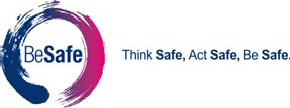Title Page
-
Depot
-
OpCo
-
Date
-
Conducted on
-
Prepared by
-
Job Title
-
Key supporting documents for this self check. Diversion Policy
-
Bridge Policy
-
Standards to check against as set out in Policy 4304 Bridge Risk Management
-
It is the responsibility of the Operations manager to ensure all routes are risk assessed and all low <br>bridges identified. Using the location coordinates, the low bridge must be added to the Green Rd <br>system using geofencing. confirm this has been done.<br>
-
Route Risk assessments
-
All bus routes are risk assessed using Tracerit and the assessments are made available to drivers.
-
All route risk assessments will detail low bridges within 3 miles of the designated service <br>route.
-
The coordinates of the low bridge location have been fed into the Ticketer and Green Rd systems
-
Has this been done for Green Rd?
-
Has this been done for Ticketer?
-
Training Arrangements
-
New driver training includes bridge awareness.
-
All new drivers must be fully briefed on the hazards of low bridges as part of their induction whilst
in the training school. The training record signed as proof this has taken place. This record is to be
kept on the DSDB TraceIT platform. -
Is the training kept on the DSDB Tracerit platform?
-
Existing drivers are refreshed on bridge <br>awareness training at regular intervals. (at least annually)<br>
-
Information & Communication
-
Low bridge maps must be on display in all control rooms and issued to drivers to help <br>identify low bridge risks in the depots operating area
-
All drivers and Engineers are briefed on the known hazardous bridges in the operating area
-
All incidents of bridge strikes and near misses are reported using the 24 hr notification on line form. <br>
-
All PCV licence holders must be briefed on this policy and the “MUST STOP” campaign for <br>diversion risk. This includes any loan and agency drivers (See SOP 4303) <br>
-
All drivers will be issued with a bridge map which details bridge heights and locations for the <br>operating area.
-
Vehicles & Ticket Machines
-
The Engineering Manager will ensure ALL buses are fitted with the vehicle height label in the cab
-
The Engineering Manager ensures all vehicle vehicle transfers are managed according to this policy and SOP 2803 using the vehicle transfer form and notification email.
-
Operations Managers and supervisors will ensure that when ticket machines are changed over for <br>any reason, they ensure the machine is correctly detailing the fleet number it has been fitted to.
-
The OpCo senior leadership team are responsible for the sign-off of all vehicle dimensions into the <br>system and the identification and geo fencing of low bridges. This applies to the Ticketer in-cab <br>alert system and the Green rd geo fencing of “No-Go” bridges
-
Ticketer?
-
Green Rd
-
Accountability for compliance with this policy
-
The Staff Manager ensures all safety breaches identified through the Ticketer and Green Rd alert <br>systems are effectively managed in line with the company’s formal disciplinary procedures. <br>
-
Schedulers are responsible for collaborating with the operations manager to ensure the change
management process is followed for all new service registrations and any change to existing
service registrations. A route risk assessment must be carried out and include a map check and
site visit of the route. Route hazards such as overhead canopies, trees, bridges, weight
restrictions, height restrictions, width restrictions. This must include possible diversion routes. The
validation of change management process must be used for this and categorised as a class D
change. Link to Employee Portal Page. -
Schedulers are aware of this policy and their responsibilities detailed above.
-
Training
-
Engineering drivers must also receive training and receive test service route risk assessments and <br>route descriptions. <br>
-
Route training will be delivered in accordance to the training standards set out in SOP55 <br>and SOP45.
-
All new supervisors must receive a full induction from an experienced supervisor which <br>specifically covers diversions and low bridges. <br>
-
Route Risk Assessment
-
All service routes and engineering/training test routes will be detailed in a route description <br>supported by a route risk assessment. <br>
-
All service routes and engineering/training test routes will be detailed in a route description <br>supported by a route risk assessment. <br>
-
Dead running routes must be risk assessed in the same way and a route description <br>issued to drivers as an absolute instruction in addition to route training.
-
Where it is possible dead running routes for both single decker and double decker must be <br>the same. This will prevent the driver “forgetting” which vehicle type they are driving in, <br>single or double.
-
Technology and back office calibration
-
No bus will travel on the public highway without the bridge warning system which means the <br>Ticketer machine MUST be fitted.
-
All of the first bus fleet, both single decker’s and double decker’s will be fitted with technology to <br>manage bridge risk. <br>
-
The definition of a low bridge is any bridge below the height of 14 foot 6 inches. Bridges below this <br>height will be geo fenced and picked up by the Ticketer technology. <br>Where a bridge matches the height of the bus, a local risk assessment will be carried out and back <br>office measurements adjusted to suit. <br>
-
The ordinance survey GPS settings will be uploaded onto the Ticketer software platform. These <br>will be checked and configured by local operating companies and verified by the OpCo senior <br>leadership team (SLT). Geofencing of those locations will be configured by each location <br>individually to ensure accuracy and effectiveness of the alert
-
The dimensions of all buses will be established using the vehicle plate details and will be verified <br>by the OpCo SLT as accurate.
-
Both above sets of data are crucial for the Ticketer software to be a reliable alert system.
-
All buses leaving the depot for any reason, MUST have a ticket machine fitted to enable the alert <br>system to work. (See appendices 5). This will assist “dead running” risks in any circumstances. <br>
-
The Ticket machine MUST be aligned to the fleet number it is being installed on. The <br>Operations Manager and Supervisors will be responsible for checking the duplicate fleet <br>numbers report to ensure that the correct fleet numbers are connected to the correct ticket <br>machine. Failure to do so will mean buses have machines with the wrong height for the <br>bus. <br>
-
Vehicle transfers
-
When a vehicle moves between opcos it must travel with an ETM fitted. Ordinarily, this will be an <br>ETM to the opco the vehicle is departing from. Arrangements should therefore be made <br>beforehand to ensure the immediate return of the ETM(s) to the owning opco.
-
Transfers within the same OpCo <br>All vehicles within an OpCo will be in the relevant Ticketer Portal, if a bus is moving between <br>depots in the same OpCo there is no need to amend any dimension data. <br>If this is a long-term load or permanent transfer between depots in the same OpCo, the depot <br>needs updating in Ticketer back office. It remains the OpCo responsibility to maintain depot <br>allocation, and to ensure that monthly cleansing of the back office is undertaken to deactivate <br>disposed stock. <br>
-
Transfers between OpCo <br>When moving to a different Operating Company, an Identity of the bus must be created in the new <br>OpCo Ticketer Back Office. These will be created centrally and as such notice must be given of <br>intended movements as early as possible and no later than 1 working day (M-F) to the move <br>fleetdimensions.bridge@firstgroup.com Central Fleet will then create the vehicle in the receiving <br>OpCo portal and input the dimension data. The local team are required to then populate any local specific data (capacity level etc) however must not amend the dimension details. Confirmation <br>from Central Fleet that the dimension data has been updated must be received prior to the vehicle <br>being operated.
-
If the dispatching opco has already received replacement vehicles and the transferring vehicles
represent an increase in fleet for the receiving opco, for which they have received extra ETMs, it is
acceptable for that opco to send these to the dispatching opco as long as they are installed and
functioning with the correct fleet ID before departure. -
3. Short Notice/ Emergency Transfers <br>There may be the requirement to move a bus to an OpCo at very short notice, such as providing <br>cover for a greater than average Vehicle Off the Road (VOR) level to ensure no loss of service. <br>Where this is completely unforeseeable (in all planned moves point 2 must be followed), a vehicle <br>can be created locally, and dimension data taken from the central database stored. Given the <br>importance of this data being accurate, a sign off of the entered dimension data from the most <br>senior Engineer and Operational colleague on site at the time will be required. This process must <br>be completed prior to the vehicle(s) being operated. <br>A copy of this form and reason for the short notice move to be sent to your local Operations and <br>Engineering Managers and fleetdimensions.bridge@firstgroup.com<br>
-
The operations manager must identify bridges in the operating area that are considered as "No-Go bridges" This is where there is no reason for any First Bus or vehicle (with green rd fitted) to go under that bridge. <br>
-
Faulty ticket machines must be changed out straight away by the ticketer fault reporting <br>process. The fault must be raised on the tracerit reporting system. <br>When a new ticket machine is installed on the vehicle the fleet number MUST be assigned <br>to that replacement ticket machine. Confirm this is the case.
-
As the primary responsibility for avoidance of bridge strikes lies with the driver, if a fault
develops on route, once reported, vehicles can continue in service, but MUST be
remedied by changing the ticket machine as soon as possible. -
Control will arrange for the ticket machine to be aligned to the fleet number and height, <br>and if the audio is not working, a changeover machine provided.
-
Audit
-
Daily audits of machines assigned will be arranged by the Operations Manager.<br>
-
Central Engineering will manage the back-office data in relation to vehicle movements and <br>cascades from operating company to operating company. This will ensure the correct vehicle <br>dimensions are aligned with the fleet nationally
-
As a final check, the driver will conduct a first user check and check that the ticket machine has the <br>correct fleet number assigned to it.
-
Training Managers will be responsible for checking the quality of low bridge training with quality <br>checks. <br>
-
Compliance with this policy will be audited annually by the OpCo HSE BP supported by the <br>Operations Director/Head of Ops
-
Audit <br>As part of the operations audits of fleet number allocation to ETM, a sample check of vehicle <br>height vs central database will be required.
-
Checks
-
All OpCos must review and verify the ordinance survey (OS) dimensions for bridge locations on <br>their network – don’t assume these dimensions are correct. <br>
-
Where we have concerns that the OS data incorrectly lists a bridge having higher dimensions than <br>what we know locally/through google map evidence then these dimensions will be <br>adjusted/reduced in the back office accordingly without risk assessment.
-
Where it is discovered that the plated bridge signage is incorrect then this will require written <br>approval from the local highway’s authority and a change to the height displayed on the bridge <br>sign. <br>
-
For height detection the Ticketer is set up with the bridge height from OS or agreed adjustments as <br>above, and the vehicle height taken from the vehicle dimensions plate. <br>No other measurements are taken into consideration.
-
For proximity distance from the bridge this is set up as 125 m with a minimum of 65m following risk <br>assessment. As detailed in appendices 4 of the policy
-
All new buses (including loans and leases) will be added to the database and Ticketer portal by <br>Central Engineering for the relevant OpCo prior to service. Depot/OpCo teams should not add a <br>vehicle for which dimensions are unavailable. In the event of a loan/lease, it is the OpCo <br>responsibility to provide the dimension data to fleetdimensions@firstgroup.com prior to any <br>collection or use being made
-
Diversion Policy 4303
-
All new drivers must be fully briefed on the route hazards and specifically low bridges whilst in <br>the training school. The training record must be signed as proof this has taken place. <br>
-
All drivers must be briefed on the MUST STOP campaign. See appendix 1. This can also be <br>found on page 163 of the Drivers’ Handbook on the Connect App. <br>
-
Any loan or agency drivers must be fully briefed on diversions procedures and the MUST <br>STOP campaign before being allowed to drive in service. They must also attend the low bridge <br>training module
-
Dead running routes must be assessed and warnings/details displayed on duty boards
-
A full set of bus network maps must be available in all control rooms
-
All planned/ long term diversions must be assessed prior to operation.
-
Where a route operates with dedicated buses, consideration should be given to preplanning a <br>set of diversion routes which should be kept in the cab of the bus. (See appendix 2 for examples – <br>need to add WSM X1 example)
-
All planned and checked diversions to be held on file for future use. <br>
-
Low bridge maps must be on display in all control rooms.
-
All drivers must stop when faced with an obstruction on normal route and seek guidance from <br>their control room. Drivers must not proceed without authorisation, even if they think a safe <br>diversion is possible.
-
The Supervisor receiving the call must ask the driver to wait until he/she responds to them with <br>further guidance. <br>
-
The Supervisor must consult network maps, file diversions and low bridge maps to determine a <br>safe route around the obstruction. If in any doubt, consult with another colleague or Manager. Low <br>hanging tree’s building canopies and other over head risks must be considered when planning a <br>diversion route. Not all single decker routes or midi bus routes are suitable for double deckers
-
Once a safe route has been determined this must be communicated clearly to the driver <br>including exact directions and road names. Do not use localised or historic landmarks which may <br>cause confusion. Remind the driver that they are driving a double deck vehicle where appropriate
-
If a journey has to be terminated or retimed due to late running or ‘bunching’ then a temporary <br>dead running route will need to be identified if the bus is taken off route for these purposes.
-
In the event the driver is re-routed off route as part of a re-timing exercise then points 6.2 to 6.5 <br>above must be applied. Finally a message must be sent to the driver in question via Ticketer to <br>clearly advise of the dead run route. <br>
-
It is recommended, where possible, OpCos identify pre-determined curtailment points and <br>associated dead runs for each route. This will allow buses to be retimed both efficiently and safely
-
Control Arrangements
-
If advised to divert by the police due to an incident, the driver must stop the bus immediately in <br>a safe position and contact the control room immediately with details before proceeding.
-
The Supervisor receiving the call should ask the driver to wait and to advise the Police that the <br>specified diversion route is being checked for safety and suitability for operation by a bus/double <br>deck bus.
-
Relief supervisors and any working at an unfamiliar location must be given a full brief as to the <br>location of route maps and low bridge maps and any diversion information before commencing <br>duty. <br>
-
Depots who take over the control of routes out of hours from other depots or central control <br>rooms must have access to full route details and low bridge maps for the service they are <br>supervising.
-
Where these are single manned, an on call or escalation telephone number must be in <br>operation to provide any guidance if required. <br>
-
Final Check
-
The depot leadership team are confident all controls set in these policies have been put in place at this depot.
Sign off
-
Operations/Staff Manager - Name:
-
Signed
-
Select date
-
Engineering Manager - Name
-
Signed
-
Select date










![Fire Wardens Monthly Fire Inspection [P13] Fire Wardens Monthly Fire Inspection [P13]](/media/e5015ee3-678a-43da-b897-b95fe5e7b479)





